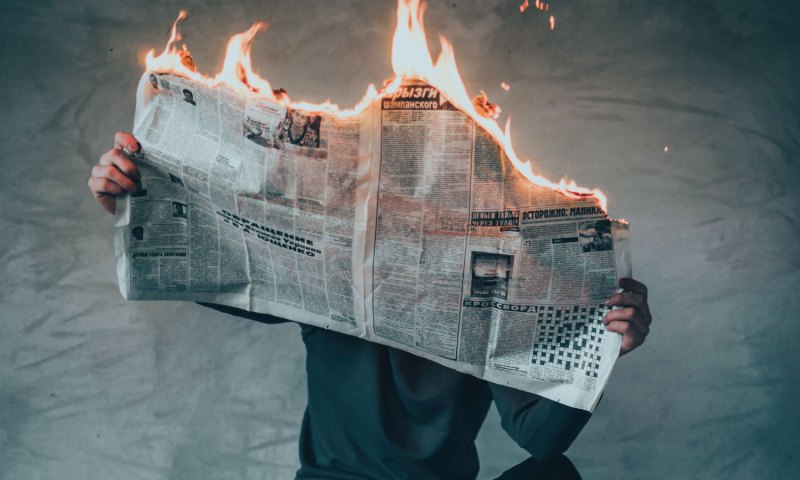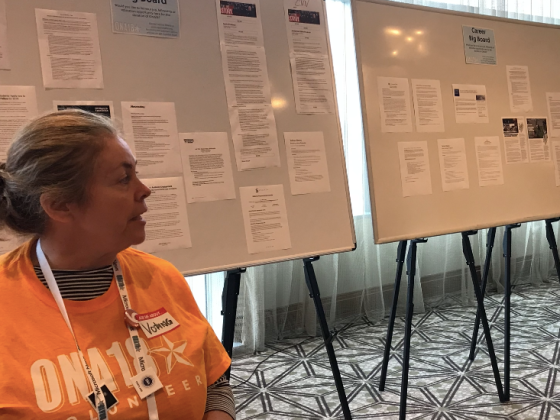
In the early 2000s, Michelle Ferrier, a black columnist at the Daytona Beach News-Journal, began to receive cryptic letters about her work and death threats. While Ferrier tried to ignore the harassment, the letters only increased with more veracity and stronger language. Police began patrolling the outside of her home. She started carrying a gun. To protect herself and her family, she decided it would be best to simply leave Florida altogether.
The safety of journalists has been an ongoing discussion topic at ONA. During one Table Talk discussion Friday, some reporters and editors shared stories of personal threats and threats to their newsrooms but declined to share their stories on the record.
Ferrier, who did not attend the Table Talk, said journalists have been here before.
“This is not new behavior. How it’s manifesting on social media makes this much more complex,” Ferrier said. “The challenge that I feel is that managers don’t understand the larger culture that’s being shaped right now.”
President Trump’s attacks on the media have helped to create an environment where journalists are increasingly in danger in the U.S. and their accurate reporting is considered suspect. For example, Trump has dismissed accurate counts of the death toll in Puerto Rico. Kenneth P. Vogel of the New York Times tweeted about a voicemail that said in part, “You are the enemy of the people. And although the pen might be mightier than the sword, the pen is not mightier than the AK-47.”
VOICEMAIL FROM A FAN: “You’re the problem. You are the enemy of the people. And although the pen might be mightier than the sword, the pen is not mightier than the AK-47.” pic.twitter.com/hKHTsGm9KL
— Kenneth P. Vogel (@kenvogel) August 20, 2018
This is the daily existence for many newsrooms around the country: voicemail threats, email harassment and a political environment that frames journalism as partisan activism.
“A lot newsrooms are not thinking about security,” said Courtney Radsch, the advocacy director of the Committee to Protect Journalists, at a Table Talk Friday. “The link between online and offline harassment and threats is only beginning to be understood as being endemic to being a reporter in the contemporary age.
“A lot of newsrooms have no policy or structure to help their reporters.”
For marginalized communities, more specifically women of color, the phenomenon of being threatened as a public figure is not new, only amplified. National Association of Hispanic Journalists executive director Alberto B. Mendoza said that his organization is just starting to create a policy in response to personal threats and doxxing. Latinx reporters who are facing threats and increasing isolation have pushed the organization’s ranks to rapidly increase as reporters seek a stronger sense of community, he said.
“This is actually a problem that our members are just beginning to share with us,” said Mendoza. “We are exploring what makes most sense to help them with what some describe as similar symptoms to PTSD, isolation and dealing with trauma.”
Ferrier stressed that this is not a new problem.
“People of color, and women in particular, used pen names for a very long time for this very reason,” she said. “One, they couldn’t get into those outlets to be heard, and then two, because of the repercussions of being in those outlets.” She suggested scrubbing the internet of public housing records, phone numbers and other information that could potentially put journalists at risk.
Prompted by seeing others have similar experiences to her own, Ferrier started TrollBusters, an organization that protects journalists by monitoring their social media feeds. TrollBusters works with newsroom management to provide resources and coach them through harassment.
A 2018 report co-authored by the International Women’s Media Foundation and TrollBusters found that 63 percent of the 597 women surveyed indicated they had been threatened or harassed online. Over half of the women surveyed indicated they had been threatened or harassed in person, and 25 percent said they had been physically attacked. Ten percent had received a death threat in the past year.

“If you go back to Ida B. Wells, she was literally run out of town. Her presses were burned,” said Ferrier.
“We may be getting back to those kinds of situations.”







You must be logged in to post a comment.